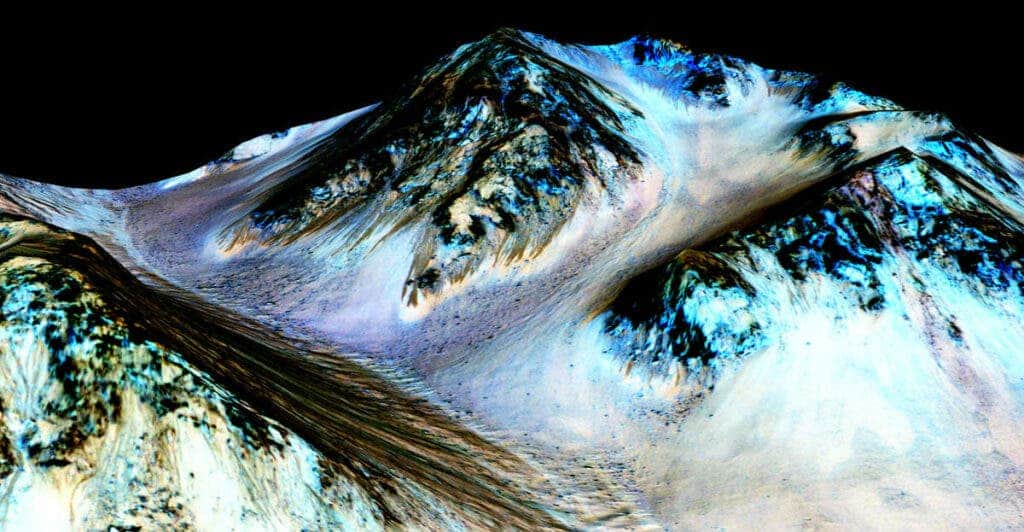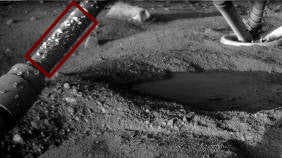
In 2015, NASA made a breathtaking announcement: Mars had liquid water flowing on its surface. But there’s a catch — this is water mixed with brine. This composition allowed the liquid to flow as dark streaks seen by overhead satellites despite the frigid temperatures experienced on the Red Planet.
Now, researchers say that these briny dark streaks may be much more common than initially thought.
Using measurements recorded by NASA’s Mars Reconnaissance Orbiter, researchers affiliated with the Southwest Research Institute, Universities Space Research Association (USRA), and the University of Arkansas devised a model that predicts where liquid brine can form on the surface of Mars.
They were stoked to find that up to 40% of the Martian surface could support liquid water on its surface for perhaps six hours at a time.
However, conditions that can enable the dark streaks to form are pretty strict. As such, brine flows in each location are possible during just 2% or so of the year, highlighting their seasonal nature.
Surprisingly, the subsurface is likely much wetter than the surface itself. The model suggests that brines could exist during 10% of the Martian year at a depth of just 3 inches (8 centimeters).

These findings seem to be in accordance with news from 2018 of a massive 20-km-wide underground lake beneath Mars’ south pole.
Although Mars seems to be wetter than originally thought, there are many caveats for those of you bristling with excitement at the thought that some Martian microbes might be lurking inside the brines.
Aside from the fact that carbon-based life — the kind we’re accustomed to here on Earth — doesn’t enjoy living in hydrated salt systems, the temperature is also far too cold.
Measurements performed by satellites orbiting Mars suggest that the brines have a maximum temperature of around -44°C (-55°F).
“Our results indicate that (meta)stable brines on the Martian surface and its shallow subsurface (a few centimetres deep) are not habitable because their water activities and temperatures fall outside the known tolerances for terrestrial life. Furthermore, (meta)stable brines do not meet the Special Region requirements, reducing the risk of forward contamination and easing threats related to the exploration of the Martian surface,” the authors wrote in the journal Nature Astronomy.
On the upside, the fact that it seems virtually impossible for these brines to sustain life gives NASA the green light to plan missions meant to investigate them without fear of contamination.
“These new results reduce some of the risk of exploring the Red Planet while also contributing to future work on the potential for habitable conditions on Mars,” co-author Alejandro Soto, a senior research scientist at the Southwest Research Institute in Boulder, Colorado,






